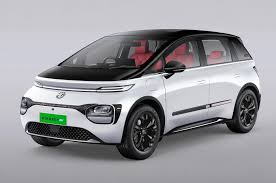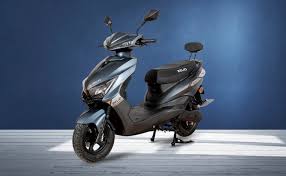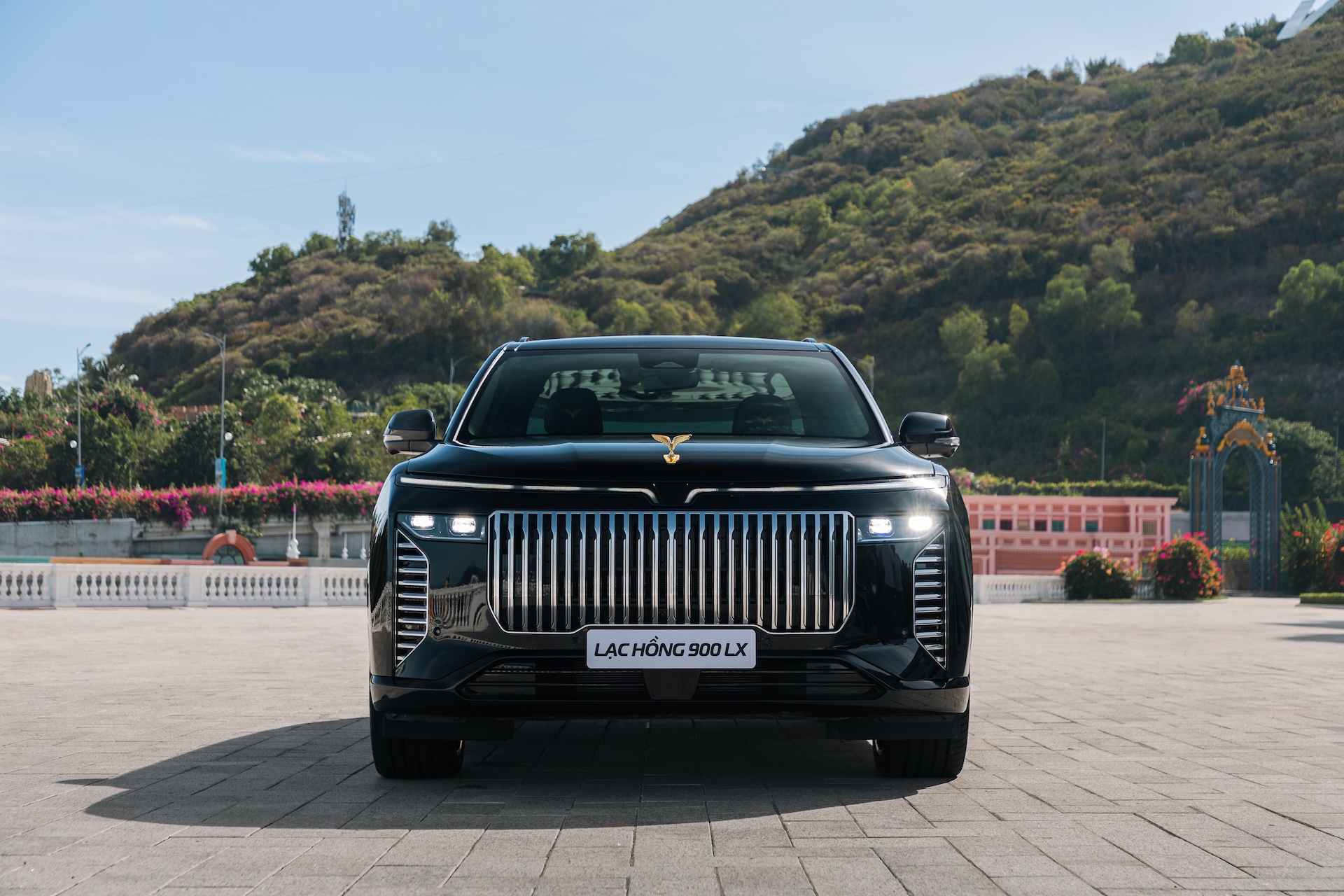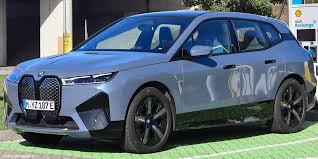Introduction
Renault is quietly preparing its next move, leveraging China’s technological edge. At a time when speed, efficiency, and innovation define survival for an automobile manufacturer, Renault’s next-generation electric vision is not being built in isolation; it’s being forged through collaboration across continents.
Renault’s Next Leap in Electrification
- Renault has long been a pioneer in Europe’s affordable EV market with models like the Zoe and Megane E-Tech; now, it moves into a different phase of evolution.
- Instead of focusing entirely on vehicle design, the company has dived deep into the heart of EV engineering: the motor itself.
- This represents a significant transition from being purely an electric vehicle manufacturer to becoming an innovator of the powertrain, fortifying the core electric technology.
Strategic Goal: Efficiency, Cost & Supply Chain Resilience
The electric models for the near future will utilize smaller motors, yet more powerful and efficient than ever before.
Key objectives of this new initiative include:
- Improved motor efficiency enables vehicle range extension without requiring an increase in battery size.
- Cost reduction through local sourcing and simplified design.
- Supply-chain resilience that ensures independence from traditional European component bottlenecks.
France-China Tech Alliance: A New Era of Collaboration
- It is in advanced discussions with a leading Chinese EV component supplier, reportedly focusing on compact, high-efficiency electric motors.
- The partnership aims to co-develop next-generation electric drive units that combine performance and affordability.
- The collaboration represents a strategic convergence of the French automotive legacy EV market.
The Partnership in Progress: Inside Renault’s Negotiations
Renault is in advanced discussions with one of China’s top EV motor manufacturers, initiating its EV transformation. The talks are not just about procurement but about co-creating the electric heart for Renault’s next generation of vehicles under its Ampere division.
Focus of Collaboration: Next-Gen Compact & High-Efficiency e-Motors
- The collaboration focuses on developing next-generation compact electric motors, aiming to achieve maximum output with minimal energy loss.
- New motors are being developed to achieve higher torque density, improved thermal efficiency, and reduced reliance on rare-earth materials.
- This development will be utilized for both small city electric cars and performance electric SUVs, thereby expanding flexibility within each segment.
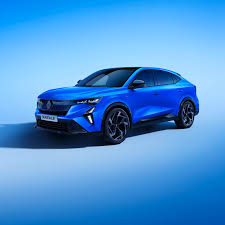 Local Sourcing: Fortifying Supply Chain Autonomy
Local Sourcing: Fortifying Supply Chain Autonomy
- A major focus of the deal is local production and sourcing of components in Asia, especially in China.
- This approach is expected to lessen Renault’s dependence on European suppliers, who are currently facing material shortages and cost spikes.
- The move also enables Renault to optimize logistics, avoid import tariffs, and speed up time-to-market for its future EV line.
Joint R&D for Global Scalability
- The partnership will come with joint research and development centers that will develop scalable motor platforms applicable in various global markets.
- This shared R&D model aims to reduce per-unit development costs, which in turn will enable Renault to be more competitive in the mid-range EV segment.
- The advanced testing and simulation facilities in China will expedite prototype validation, reducing overall development cycles by up to 30%.
Ampere-Branded Electric Models to Power the Future
- The motors developed under this partnership are likely to find their premier application in Renault’s Ampere-branded vehicles, which represent the company’s pure electric vehicle (EV) sub-division.
- Included in Ampere’s portfolio are the forthcoming Renault 5 EV, the Renault 4 crossover, and future Megane variants, all of which will benefit from this compact motor innovation.
- This synergy could give Renault a crucial performance and pricing edge in Europe’s growing sub-€25,000 EV category.
Strategic Alignment: Post-Nissan Independence
- The talks also underscore Renault’s move towards greater EV technology independence following its restructuring and reduced R&D dependence on its partner, Nissan.
- By forging direct technology alliances, Renault has been building a self-sustained path of innovation aimed at in-house control over electric powertrains.
Why This Matters: Strengthening Renault’s EV Roadmap
It is about making them smarter, lighter, and dramatically cheaper. The French car manufacturer plans to cut its EV production costs by half by 2027, and this deal with the leading Chinese supplier could turn out to be a catalyst that will help this ambition become a reality.
Smaller, Lighter Motors with Higher Torque Density
- The new generation under development will use compact architecture with lightweight magnetic materials. This will decrease the total motor weight by up to 20%.
- These motors are expected to provide higher torque density despite their smaller form factor, ensuring faster acceleration without an increase in power consumption.
- Such efficiency gains will be important to Renault’s city car-focused models, such as the Renault 5 EV, which will utilize compact yet high-performance drivetrains.
Improved Energy Conversion Efficiency-leading to Extended Range
- One of the main benefits of this collaboration is the improvement in electromagnetic design and cooling systems, hence increased overall efficiency in energy conversion.
- The result: longer driving ranges from the same battery capacity, a direct advantage in Europe’s competitive sub-€30,000 EV market.
- It also aligns with Renault’s aim to provide 400-plus km range EVs at mass-market prices by 2027.
Localized Sourcing: Reducing Manufacturing Costs & Lead Times
- By integrating a China-based production and component supply model, Renault will be able to shorten its EV supply chain significantly.
- This decreases exposure to European raw material shortcomings and the associated logistical bottlenecks, ensuring steady production rates.
- With lower sourcing costs, Renault could save 5-10% overall per vehicle, enabling it to remain price-competitive in Europe against BYD and Tesla.
Access to Silicon-Carbide (SiC) Inverter Technology
- The cooperation could also unlock access to silicon-carbide inverter systems for Renault, one of the critical upgrades that improve power efficiency while reducing heat generation.
- SiC inverters, already common in many Chinese EVs, can boost drivetrain energy efficiency by as much as 5% and give vehicles more range without the need for bigger batteries.
- The integration would represent a technological leap for Renault’s Ampere division, elevating its power electronics to the level of leading companies worldwide.
Accelerating It’s Mass-Market EV Mission
- Backed by this collaboration, Renault reinforces its strategic vision for affordable electric mobility in both Europe and Asia.
- It focuses on having cost-optimized, high-efficiency EVs to position itself at the forefront in markets where subsidies are shrinking but demand is increasing.
- It’s a merger of French style and Chinese efficiency in a deal that could start redefining the economics of electric cars over the next decade.
The Tech Behind the Talks: What’s Changing in EV Motors
At the heart of this negotiation between Renault and BMW stands a silent revolution in EV propulsion-one driven by precision engineering and material innovation. These new-generation motor designs being discussed could dramatically change how efficiently Renault’s electric cars move, charge, and are produced.
Hairpin Winding Technology — Cooler, Smarter, More Efficient
- Instead of traditional round-wire coils, the new motors use flat copper “hairpins” to tightly pack windings within the stator.
- This enables denser current flow and improved thermal conductivity, thereby enhancing overall motor efficiency by up to 5%.
- The result: less heat, more power, and longer component life — a key advantage for compact EVs like the Renault 5 and Renault 4 EV.
Integrated Drive Units
- This integration reduces weight, wiring complexity, and assembly time, thereby lowering vehicle costs while enhancing reliability.
- Examples include the already in-use integrated systems of Chinese carmakers BYD and GAC Aion, which showcase scalability and performance efficiency.
Magnet-Free or Reduced Rare-Earth Designs
- The collaboration investigates magnet-free motor architectures, which would eliminate the use of rare-earth elements like neodymium.
- The approach reduces environmental impact from mining and mitigates supply risks stemming from China’s dominance in the processing of rare earths.
China’s Role: Setting the Global Efficiency Benchmark
- These breakthroughs underscore how Chinese EV suppliers are now setting the global standard in motor miniaturization, integration, and cooling efficiency.
- By collaborating rather than competing head-on, Renault positions itself to absorb an innovation ecosystem: merging Chinese hardware excellence and French automotive engineering finesse. The future of Renault’s EV powertrains may be born in China and refined in France before being driven around the world.
China’s Growing Influence in EV Component Tech
In the global race for electric vehicles, China has become the factory floor of the future. What began as a cost advantage has turned into technological dominance — and the world’s automakers are taking notice. Today, no EV supply chain is truly independent of China’s engineering prowess, especially when it comes to the heart of every electric car: its motor and inverter systems.
China’s Commanding Share in EV Motor Production
- In 2025, over 60% of the world’s electric motors are expected to be produced in China for supply, not just to domestic giants such as BYD, NIO, and XPeng, but also to names across Europe and North America.
- Its control over rare-earth refining, precision magnet manufacturing, and inverter electronics gives Chinese suppliers unique leverage in the EV ecosystem.
- The scale of this ecosystem enables them to experiment more quickly, cut costs more deeply, and iterate on technology faster than most Western competitors.
European Automakers Already on Board
- This move by mirrors a growing trend: Volkswagen, BMW, and Stellantis have all reached agreements or joint ventures with Chinese component companies.
- The collaboration between Volkswagen and Gotion High-Tech for battery packs, the tie-up between BMW and E-Drive Systems, and Stellantis’ sourcing from CATL and Leapmotor underpin this East–West integration.
- For the legacy automakers, these alliances will not only be about affordability but also about access to next-generation innovation pipelines that cannot be replicated domestically.
Strategic Necessity, Not Dependence
- Renault’s negotiations underline a strategic need to remain competitive in an industry where margins for EVs are razor-thin and the cycles of innovation are getting shorter.
Impact on Renault’s Future Lineup (Ampere & Beyond)
For Renault, this is not just a technology discussion with its Chinese EV motor partner; it’s about changing the DNA of next-generation electric vehicles. It could soon power a wave of Renault models built under Ampere, the automaker’s dedicated electric sub-brand, aimed at making Europe’s EV transition faster, smarter, and more affordable.
Ampere: the electric heart for Renault’s future
- Ampere was created to consolidate Renault’s EV R&D, manufacturing, and software into a single ecosystem-a European answer to Tesla and BYD.
- The potential Chinese partnership aligns perfectly with Ampere’s roadmap to reduce production costs by 40–50% and accelerate the time-to-market for new models.
- With the integration of these next-generation motors, Ampere vehicles will feature a lighter architecture, modular components, and superior energy efficiency—all critical to making EVs more affordable for the mainstream market.
Renault 5 EV – The Urban Revolution
- Slated for production in 2025, the Renault 5 EV is the brand’s boldest attempt to bring nostalgia into the electric era.
- The new motor tech could make it smaller yet more powerful, offering brisk city performance and a range of over 400 km.
- A cost-optimized e-motor with reduced rare-earth dependency will be key to keeping its expected price near €25,000, thereby placing it directly against the VW ID.2 and BYD Dolphin.
Renault 4 EV — Adventure Reimagined
- Based on the same AmpR Small platform as the Renault 5, the Renault 4 EV will be a compact crossover intended for youthful, urban explorers.
- This compact, integrated motor system enables more cabin space and lighter suspension loads, resulting in improved handling and efficiency.
- With advanced motor cooling and SiC inverter technology, it’s bound to provide instant torque with lower power consumption, which is essential to its rugged yet efficient identity.
Renault Scenic E-Tech — Long-Distance Efficiency
- The Scenic E-Tech is Renault’s mid-size family SUV, a model that could use the new motor system in the 90 kWh version.
- It will boast a better range of over 620 km and quicker acceleration, yet still maintain smoothness in a package ideal for family travel.
- These improvements will finally turn the Scenic into a formidable European competitor to the Hyundai Ioniq 5 and VW ID.4, while also being more cost-effective to produce.
Future Ampere Models – Export Ambitions
- The company plans to export EVs built by Ampere to emerging markets, including Asia and Latin America.
- Access to Chinese-developed e-motor technology enables Renault to produce region-specific models with scalability, eliminating the need for additional costs.
The Bigger Picture: Europe’s Tech Dependence vs. Collaboration
Renault’s talks with a Chinese supplier are more than just a business deal — they are a mirror reflecting Europe’s electric dilemma. The batteries, motors, and inverters that power this revolution are increasingly sourced from China. What was once a question of competition is now a debate about dependence versus collaboration.
Europe’s EV Ambition Meets a Supply Gap
- The European Union has set a target to ban by 2035. Still, the industrial base for the most critical EV components lags behind that of Asia.
- Despite the presence of strong players like Valeo, Bosch, and Vitesco, Europe lacks the mass-scale production capacity that China has developed over the last decade.
- This has left European automakers, such as Renault, with a choice: build everything at home and risk delays, or collaborate abroad and stay competitive.
Balancing Innovation with Industrial Sovereignty
- It has proposed measures, such as the European Critical Raw Materials Act and the Battery Alliance, aimed at rebuilding local supply chains.
- Building equivalent capacity for motors, inverters, and semiconductors will, however, require several years and billions of dollars in investment.
- In effect, Renault’s collaboration serves as a bridge strategy, enabling it to remain competitive today while Europe scales its own industrial base in the future.
China’s Leverage — and Europe’s Learning Curve
- China’s dominance in EV components isn’t an accident. It is the result of twenty years of coordinated policy, R&D incentives, and ecosystem development.
- European policymakers are starting to see this as a model rather than a threat.
- The real question these days isn’t whether to work with China; it’s how to work with China.
Verdict: A Pragmatic Alliance for an Electric Tomorrow
Renault’s decision to look East isn’t just about cost; it is about clarity—a recognition that the future of mobility will be dictated not by where technology originates, but rather how well it is shared.
As Europe and China navigate the delicate balance of competition and cooperation, Renault stands at the center—a bridge between two industrial giants. Its electric destiny will no longer be forged by national borders but by shared purpose and global engineering harmony.
So, when the next-gen Renault 5 hums down a Parisian street, powered by a motor born from Franco-Chinese innovation, it will carry more than electrons. It will carry a message — that the real power shift has already begun, and it is driven by collaboration.
FAQs:
Q1. What is Renault discussing with the Chinese supplier?
Renault is in advanced discussions with a leading Chinese electric vehicle motor manufacturer to co-develop its next-generation electric drive units. The talks centre around compact, high-efficiency motors and inverter systems that would be deployed from 2026 onwards in Renault’s Ampere-branded EV models.
Q2. With which Chinese company is Renault negotiating?
While Renault has not officially confirmed the name, industry insiders suggest it could be one of China’s top-tier EV component suppliers, such as Zhejiang Founder Motor, Jing-Jin Electric, or Huawei’s EV division, DriveONE, all of which are known for their state-of-the-art e-motor technology.
Q3. Why is Renault turning to a Chinese supplier?
The partnership is part of a strategic push to cut costs and accelerate innovation. China leads in motor miniaturization, inverter efficiency, and rare-earth-free designs, which provide Renault with access to proven, scalable technology at lower development costs.
Q4. Will this make Renault dependent on China?
Well, not quite. While the core designs are co-developed with Chinese partners, Renault will localize production and R&D in Europe under its Ampere division. The strategy enables Renault to balance the need for cost efficiency with that of supply chain control.
Q5. How will this affect Renault’s future EVs?
The new technology is expected to debut in the Renault 5 EV and Renault 4 EV before being introduced across the range, including the Scenic E-Tech. Better efficiency, longer range, and lower production costs will make the next generation of Renault electric vehicles more competitive with the likes of BYD, Tesla, and Volkswagen.
Q6. What new technologies are being discussed?
The partnership focuses on:
- Hairpin winding motors for improved cooling and torque output.
- Integrated drive units combining motor, gearbox, and inverter.
- Magnet-free architectures to reduce rare-earth dependence. Silicon-carbide inverters for improving efficiency in power conversion.
Q7. By how much could this collaboration cut EV costs?
Industry estimates indicate potential savings in drivetrain production of up to 20% and a 10–15% increase in driving range. Such savings are crucial as Renault aims to halve its overall EV production costs by 2027.
Q8. What does this mean for Europe’s EV industry?
It reflects a paradigm shift: Europe is transitioning from a stance of staunch self-reliance to a strategic collaboration with China to stay competitive. This might serve as an example, persuading other European carmakers to adopt co-development over competition.
Q9. How does this fit into Renault’s Ampere strategy?
Ampere is Renault’s dedicated EV division, tasked with building efficient, mass-market electric cars for Europe. Partnering with a Chinese tech leader supports Ampere’s goal of reducing EV costs by 40–50% while expanding its global reach.
Q10: When can we expect to see the first Renault EVs with this new motor?
Suppose negotiations conclude at an early 2025 timeline. In that case, production-spec motors may start arriving by late 2026, mostly in higher trims of the Renault 5 EV or other future Ampere models targeting European and Asian markets.

